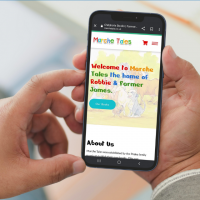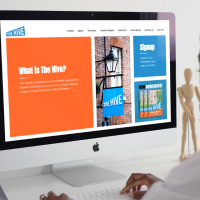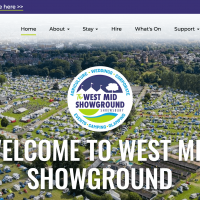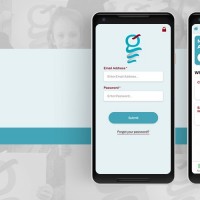Introduction
Our CRM implementation is starting to take shape. We've made the most important decision - which is to go ahead and start the project - we've worked out what our CRM goals are, so we know what we want out of the project, and we've got our CRM team together. We're now set to start some real, gritty work.
The analysis stage of a CRM project is probably the most important work you will do. Yes, you need to do development and change the way your employees work, but how do you do those stages without working out what you are currently doing?
That's what the analysis really does. It makes sure you know exactly what you're doing now. What's that? You know what you're doing? Yes, I have no doubt you know your business inside out, but read on to see why this stage, especially the end result, is still relevant.
Starting Off
There is no escaping the fact that this stage is a mammoth task, but it is completely worth it. The aim is to get an overall Process Map of everything you want to include in your CRM project. In a company-wide implementation, that would literally be everything. In a department-wide implementation, it would be everything in the department (and maybe a few other external influences). At a team level, it's going to be everything your team does.
So, this is a very big task and the easiest way to tackle big tasks is to break them down into manageable chunks. You need to start by getting your CRM Team together and mapping out the business or department at a high-level. This part should be relatively easy and straight-forward, as it's basically the departments and any external parties you get highly involved with. Write them down, put it in a diagram, draw it on a flip-chart - it doesn't matter - just make sure you have covered everything. Next, you want to drill down into each department. Again, split it up into smaller chunks. Map out the teams and/or individuals within each department. Make sure nobody is left out!
The Real Work
Once you have everyone mapped out (and notice that I have not mentioned systems yet), the real work starts. This is where you need to spend some time with each department, each team and each employee. Of course, this work can be delegated amongst the departments, with the CRM Team providing assistance, but you do need to make sure the details are paid attention to.
You are looking to find out what each employee does on a daily basis, which tools they use (including systems), which data, other employees or external sources they rely upon and -crucially - which of their tasks are manual, which are partially automated and which processes they rely on that are fully automated. Then, you need to map it all out and link it all together. This is a tricky task, as you need to make sure they tell you everything, but it should become easy once you fit all the pieces together.
For example: John in Finance has a weekly task that he says relies on data sent over to him from Sally in HR. However, you have no information from Sally on how she generates this data, so you know Sally has not told you everything she does. Usually, when employees are quizzed over processes they have missed, they realise you really did mean everything and you start to find out even more things that have been missed. "Oh yeah, the first thing I do each morning is to close off old support calls" or "I forgot about logging in to our Creative Agency system once a week to check our eMarketing open-rates"...
Lead, Lead, Lead!
I know I have mentioned this multiple times throughout this series, but I really cannot stress this enough. The approach must come from the top. You should have already made people in the business aware of what you are doing, but you should remind them all again before starting the analysis. Make announcements in departmental meetings, send out an email, make a company announcement. Make sure all of your staff knows that they are expected to tell you everything they do, but make sure they know it is to help them and the business. You need to make sure they understand that this is not a corporate spying exercise, so do it with a friendly smile!
Processing Your Analysis
Once you have all the information, which could be months down the line, you should be able to produce some Process Maps that show you exactly what is happening within your business and how it all links together. Because this can get complicated, you can have multiple maps to make it clearer. For example, you could have a Process Map to show all departments and interactions between them, a Process Map for each department to show each team and the interactions between them and a Process Map for each team to show the individuals and the interactions between them. It really depends on the amount of data you have. Just make sure it is clear.
Testing Your Results
A good test as to how straight-forward your Process Maps are is to ensure you can clearly present the analysis you have done to people outside of the CRM Team, so they understand the business and how everything within it interacts.
Analysing Your Analysis
Those Process Maps then need to be analysed themselves and this is a job for the CRM Team as a whole. They give you a great visual representation of how things work and they may very well have highlighted some current issues. You can use them to plan your CRM project.
You need to remember the focus of the project - putting the customer first. Look at the processes and interactions and work out how you can make them more streamlined, where processes overlap, where work can be automated and where work can be more focused towards a customer-centric view. Crucially, look at parts of the business that don't interact. There may be valid reasons for this, but if there is a benefit to be had, maybe the reasons can be overcome with new or updated technology or the new way of working CRM gives you.
The Examples
It's difficult for me to really explain the analysis side without some examples. However, I'm conscious of writing another mammoth article (a big article, not an article about Mammoths), so I won't cram everything in here. Instead, my next article will be Part 4 - Analysis Examples.
Summary
- CRM analysis gives you the basis to make the changes you need to make.
- CRM analysis gives you a clear picture of what needs to be done.
- This is a very big, but very worthwhile task.
- Break everything down into manageable chunks.
- Start with an overview of the business, then of each department, then of each team.
- Make a record of every task that is done in the business and everything your staff members rely upon in order to do those tasks.
- Lead from the top - make sure everyone is aware that this is not a corporate spying exercise and that they are expected to be open and comply - in a nice way!
- Analyse and process your findings to decide what needs to change or improve.
- Examples: To avoid another huge article, I will write a separate "Analysis Examples" article next.








































